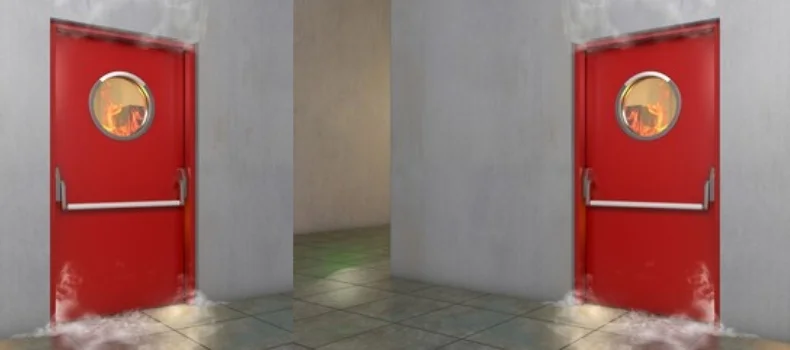Fire safety stands as a paramount concern in today’s world, particularly in a populous and bustling nation like India. The potential for fire incidents looms large, necessitating stringent preventive measures. Among these measures, the installation of high-quality fire-resistant doors emerges as a critical safeguard against potential disasters. In this comprehensive guide, we delve into the intricate realm of fire door safety, exploring the significance of advanced fire door solutions provided by KORINDIA and their pivotal role in fortifying fire safety standards across India.
Understanding Fire Doors:
Fire doors aren’t mere entrances; they are meticulously engineered barriers designed to withstand the ferocity of fire for predetermined durations. Constructed from robust materials such as steel, timber, or glass, and fortified with fire-resistant seals, these doors serve as the backbone of passive fire protection systems. Their primary function is to halt the advance of flames and smoke, confining the fire within its origin and facilitating safe evacuation for occupants.
Despite their undeniable efficacy, the widespread adoption of fire doors in India has encountered challenges stemming from gaps in understanding, awareness, and certification standards. To address these challenges, collaborative efforts and strategic partnerships are imperative. Recognizing this necessity, KORINDIA has embarked on a mission to provide comprehensive guidelines for the effective implementation of fire doors, in conjunction with fire safety authorities.
Empowering Fire Door Potential:
Within the intricate tapestry of fire safety protocols, fire doors emerge as pivotal components, delineating secure fire compartments that inhibit the spread of flames and smoke. The efficacy of a fire door hinges upon meticulous adherence to prescribed standards and precise execution during installation.
At KORINDIA, a dedicated team of professionals versed in fire door applications endeavors to empower stakeholders in erecting scientifically sound fire compartments. These compartments, tailored to the nature of occupancy, necessitate the inclusion of fire doors with commensurate ratings. Typically, a fire door’s rating denotes its ability to withstand fire and smoke for specified durations, ranging from 30 to 240 minutes.
Given the criticality of fire safety, compliance with building codes and standards assumes paramount importance. The National Building Code of India (NBC) and the Bureau of Indian Standards (BIS) furnish indispensable directives regarding fire safety, including the recently updated standards for fire-resistant doors. Building proprietors and managers must acquaint themselves with these regulations to ensure the meticulous installation, maintenance, and efficacy of fire doors during emergencies.
Navigating the Certification Maze:
Amidst the intricacies of fire safety standards, discerning the authenticity of fire door certifications assumes paramount importance. The Bureau of Indian Standards (BIS) recently released the latest standards for fire doors, encapsulated in IS:3614. These standards delineate a comprehensive set of requirements spanning from construction specifics to maintenance guidelines.
Foremost among these requirements is the fire-resistance rating, indicating a door’s ability to withstand fire and smoke infiltration for specified durations. Notably, the Indian standard mandates a 120-minute rating for most fire doors, underscoring their robustness in preserving structural integrity during fires.
In addition to rating specifications, the standards provide meticulous guidelines concerning construction prerequisites, including permissible materials, dimensional constraints, and hardware specifications. Moreover, stringent testing and certification protocols administered by accredited laboratories serve as litmus tests for verifying a fire door’s conformity to prescribed standards.
Pioneering a Safer Future:
In recognition of the imperative to bolster fire safety measures, stakeholders across sectors must unite in spearheading concerted endeavors. It is imperative to foster awareness regarding fire safety regulations and the pivotal role of fire door testing and certification therein.
KORINDIA’s commitment to upholding fire safety standards exemplifies its dedication to ensuring the safety and security of occupants and assets. By adhering to rigorous testing and certification protocols, KORINDIA sets a benchmark for industry peers to emulate, thus fostering a culture of vigilance and compliance.
Conclusion:
In conclusion, fire safety stands as a collective responsibility that demands unwavering commitment and collaboration. By fortifying our buildings with rigorously tested fire doors and adhering to regulatory mandates, we can mitigate the perils posed by fires and safeguard lives and property. Let us embark on this journey towards a safer future, where every edifice stands as an impregnable fortress against the ravages of fire, propelled by the advanced fire door solutions provided by KORINDIA.


Innovations in Door Manufacturing: How Technology is Shaping the Industry